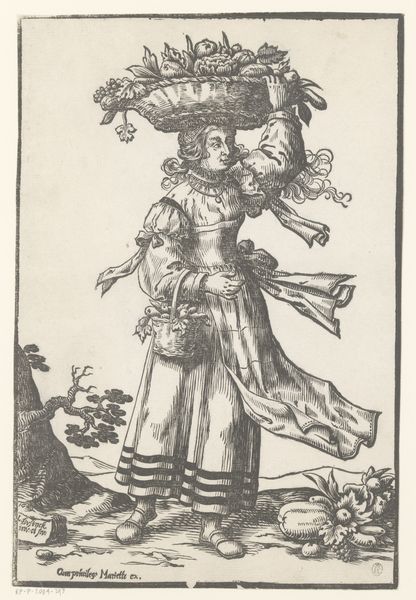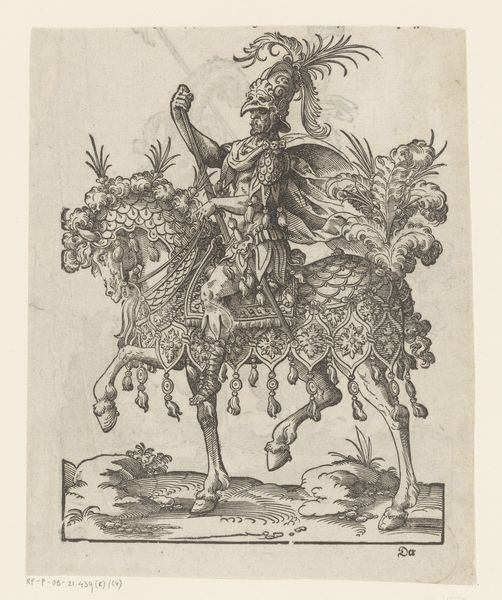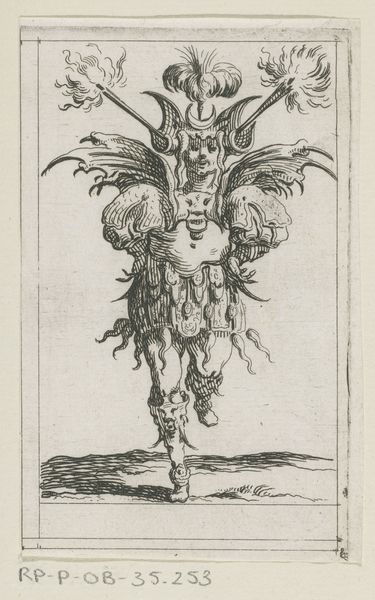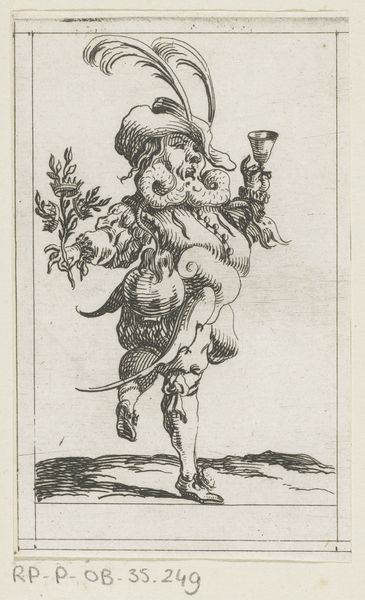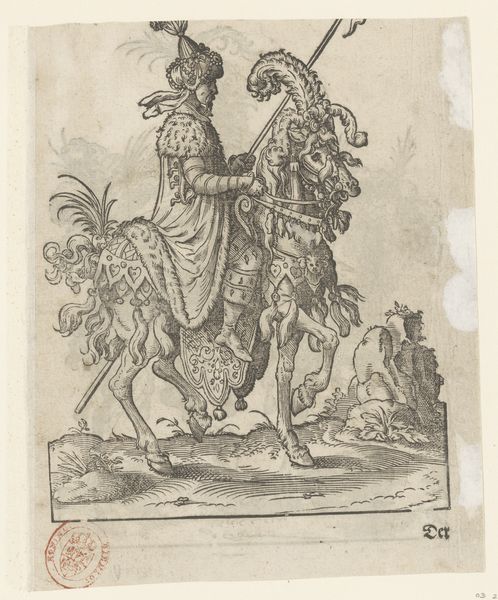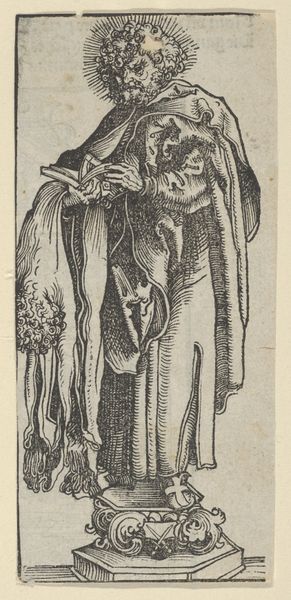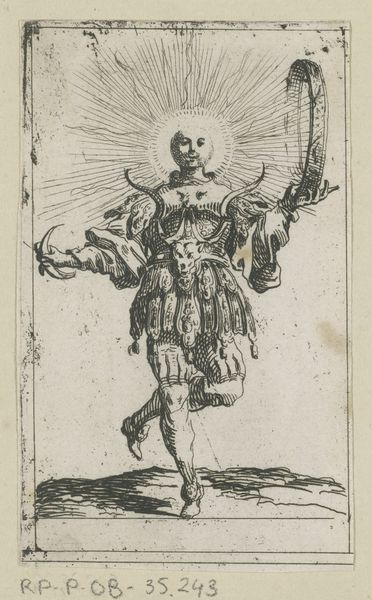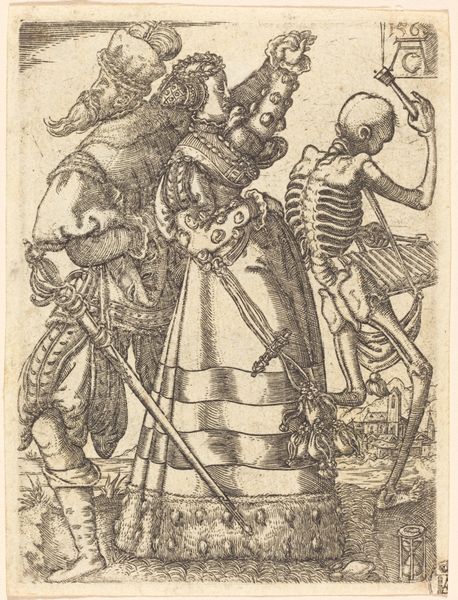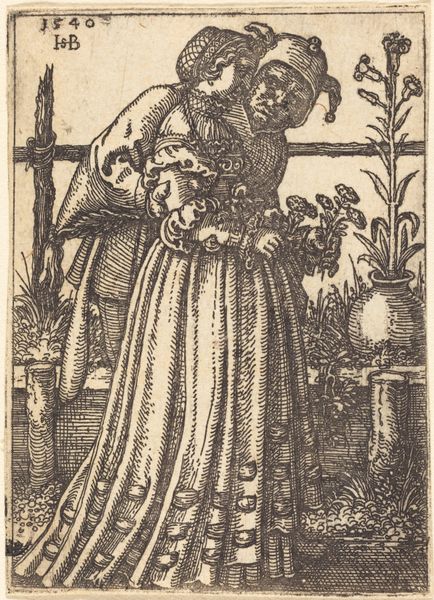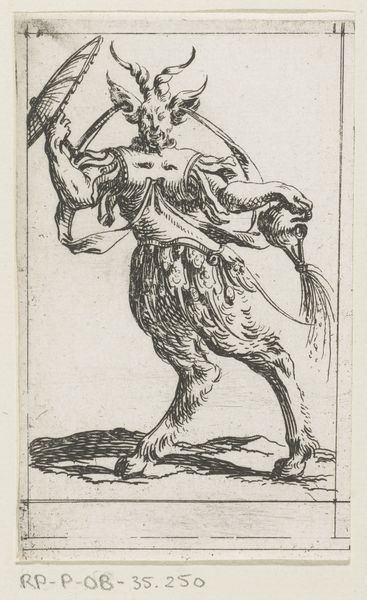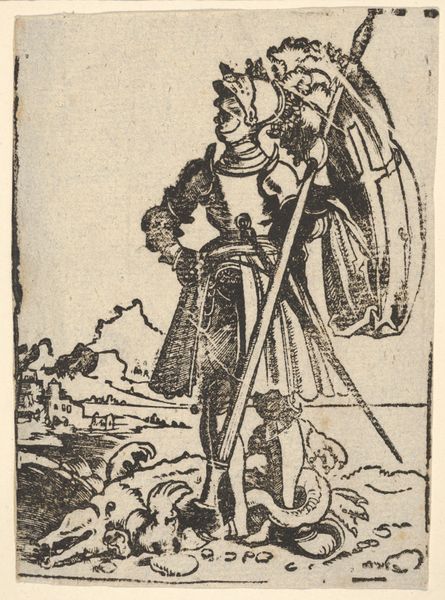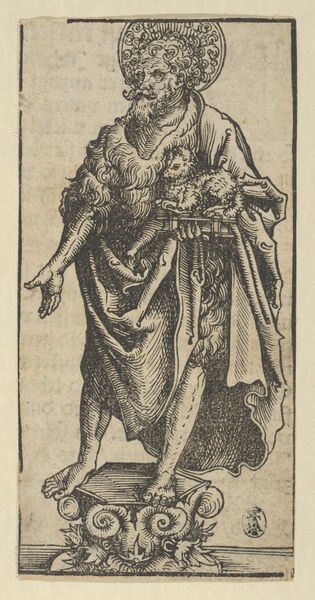
drawing, print, woodcut
#
portrait
#
drawing
# print
#
figuration
#
soldier
#
woodcut
#
history-painting
#
northern-renaissance
Dimensions: Sheet: 9 1/2 × 7 5/16 in. (24.2 × 18.5 cm)
Copyright: Public Domain
Editor: Here we have Lucas Cranach the Elder's "Footsoldier with Halberd," a woodcut likely made sometime between 1472 and 1553. It’s at the Met, and it has this interesting contrast with the female figure to its right. There is a feeling of weightiness that it carries. What catches your eye in this piece? Curator: The immediate visual interest lies in that duality you’ve mentioned – the robust footsoldier contrasted with a woman. However, I see Cranach using these prints as a mirror reflecting the socio-political anxieties of the time. Editor: Anxieties, how so? Curator: Think of the Reformation brewing. Religious authority was challenged. The visual language became incredibly important in shaping public opinion. Cranach, close to Luther, crafts a martial figure – the foot soldier with the halberd, a symbol of civic defense. How might such images affect local allegiances? Editor: It could act as a call to arms, almost? Curator: Precisely! But there's also a level of sophistication here. The details in the soldier’s garb—it speaks to a concern with status, a world where appearances solidify class distinctions. The art serves both religious sentiment and a world of rising social complexities. Editor: So the image isn't just about a soldier, but also about larger societal shifts? Curator: Absolutely. These prints were a means of propaganda but also tools reflecting on social hierarchy and changing power dynamics, playing a role in shaping perceptions of civic duty. Editor: I hadn't considered the socio-political element so explicitly, but now the historical context definitely adds another layer of depth to the work. Curator: Right. This is the perfect example of how art actively participates in and comments on the very fabric of history.
Comments
No comments
Be the first to comment and join the conversation on the ultimate creative platform.
